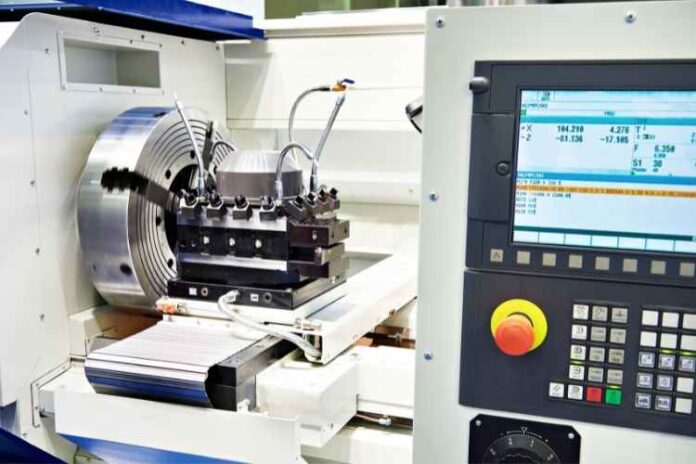Machine tools known as lathes are used in the metalworking industry to perform turning operations, which result in the creation of cylindrical forms such as spheres and cones. Since lathe work is often an important component of the functioning of machine shops, metal lathe machines are a necessary component of such establishments. Mechanics utilize the computer numerically controlled (CNC) lathe to perform various metalworking tasks.
These projects often include high-volume components that call for accuracy and repeatability. However, even if you are looking for a basic engine lathe, you are still making a significant investment, and there are a few things you should be aware of before buying it. Standard engine lathes are one kind, while computer numerical control (CNC) variations are another. The advantages and disadvantages of each category can be summarized as follows:
Headstock:
The headstock of a metal lathe may be located on either the left or right end of the machine, and its primary function is to rotate the work piece. It is equipped with bearings that enable the work piece to spin relative to the stationary cutting tool.
Spindle:
Lathes have a spindle in addition to their headstocks in their construction. Spindles are designed to “spin” freely because they are hollow and include threading on the object’s exterior. Some spindles are manually operated using a foot pedal, and some are driven automatically using a motor.
Faceplate:
A faceplate is a common component of lathes, although it is not included in every lathe. The faceplate’s job is to keep the work piece from moving about while it’s being held. In the industrial industry, it is standard practice to fasten the work piece to the faceplate of the lathe before turning it. It is common practice to do this by threading a screw or bolt through the work piece and the faceplate simultaneously. When everything is in place, the lathe is started, which causes the work piece to rotate while being cut by a tool that remains motionless.
Lathe for Making Jewelry:
A jeweler’s lathe is a specialized lathe built for turning tiny items and work pieces in particular. It is possible to think that jeweler’s lathes are primarily used for jewelry, such as watches; however, this is not always the case. They are versatile tools that may be used to manufacture a wide variety of tiny items and work pieces. Jeweler’s lathes include many of the same components as standard lathes, but they are scaled down to provide a handy and effective machining tool for work pieces and items on the smaller side.
Bed:
The work piece and most of the metal lathe components are both positioned on the bed of the lathe, which is the horizontal beam on which the lathe is supported. The only exception to this rule is CNC lathes, which almost always have a vertical beam to reduce the amount of Swarf that accumulates (see below). The Swarf does not accumulate in and around the work piece as it would if the bed were horizontal since it falls easily to the floor when the bed is vertical.
Swarf:
Swarf will nearly always be produced by lathes, regardless of the activity that they are being used for, whether it be cutting, sanding, turning, or anything else. Swarf is a term that refers to material that has been removed from a work piece. It is most often referred to as chips. A lathe will remove part of the material from a work piece, regardless of whether it is composed of wood or metal. “Swarf” is the word used to describe this kind of substance.
Conclusion:
The manufacturing sector makes extensive use of a variety of machining equipment, and one of the most versatile of these instruments is the metal lathe. Sanding, drilling, and facing are three additional applications that may be performed with these machines in addition to the more common cutting and turning operations. Lathes, which should not be confused with milling machines, are devices that revolve around a work piece while cutting it with a tool that remains stationary.


